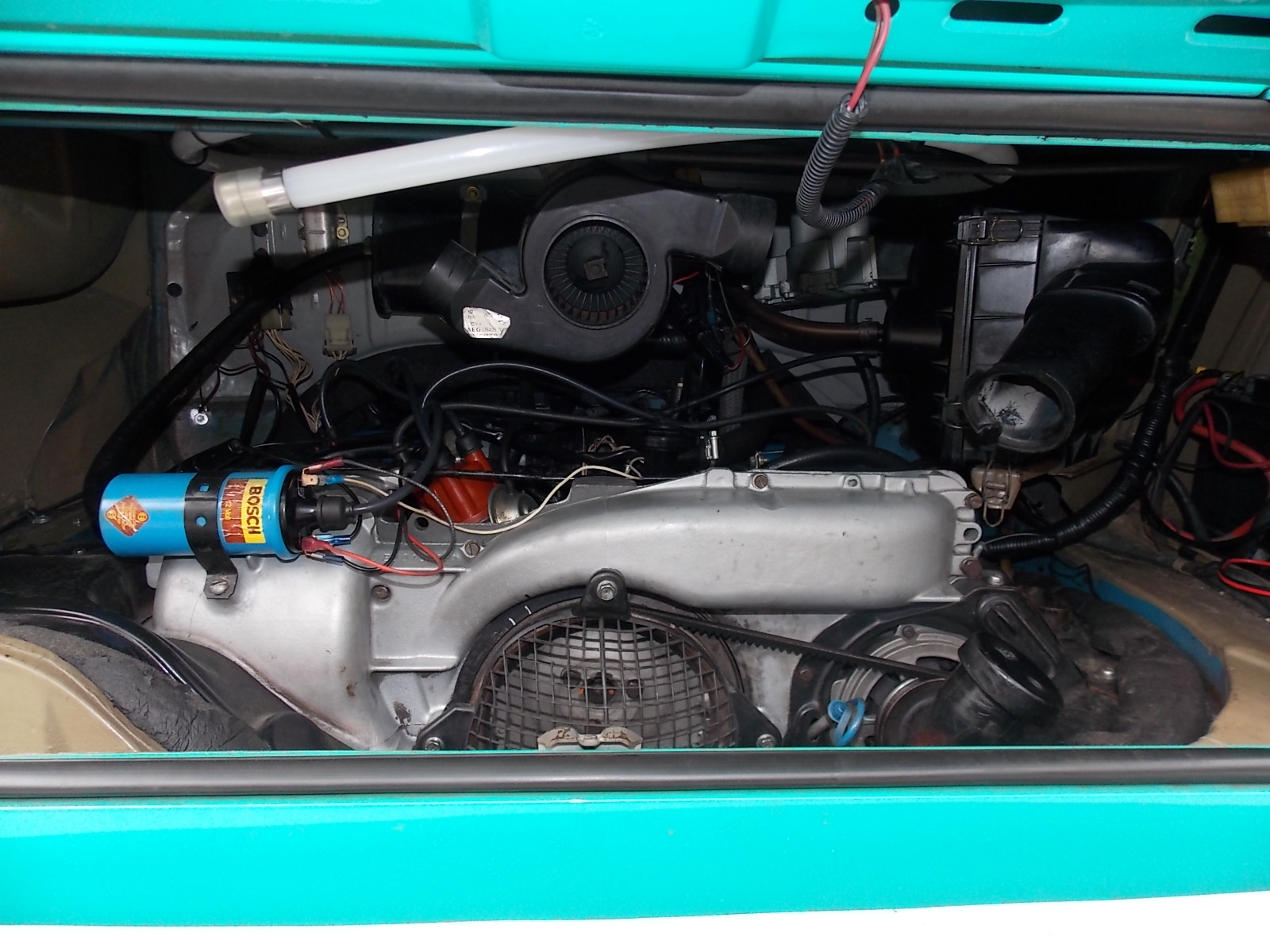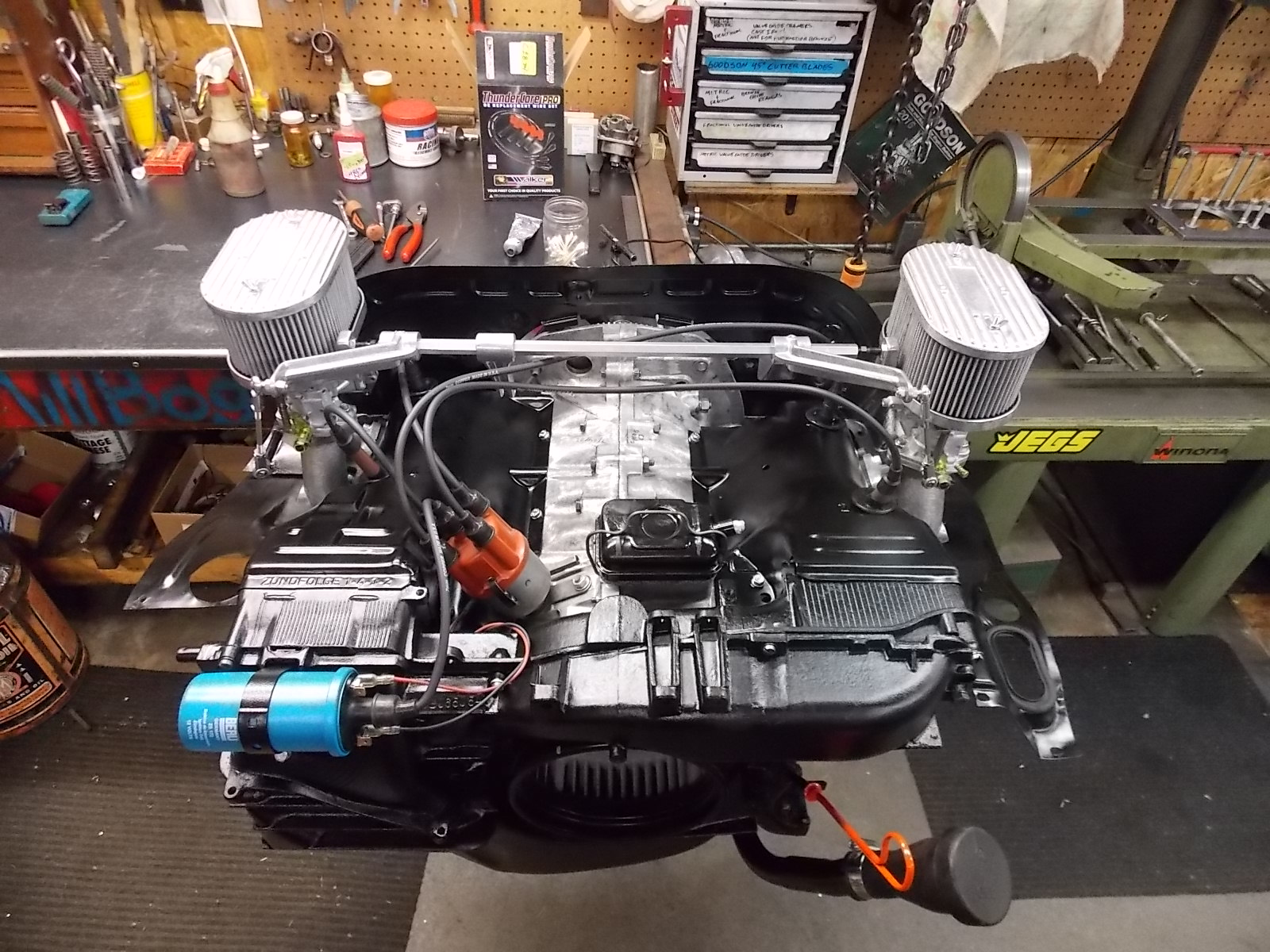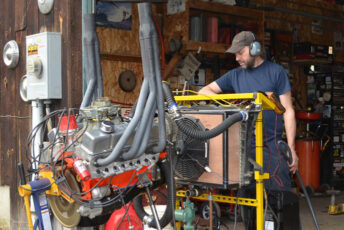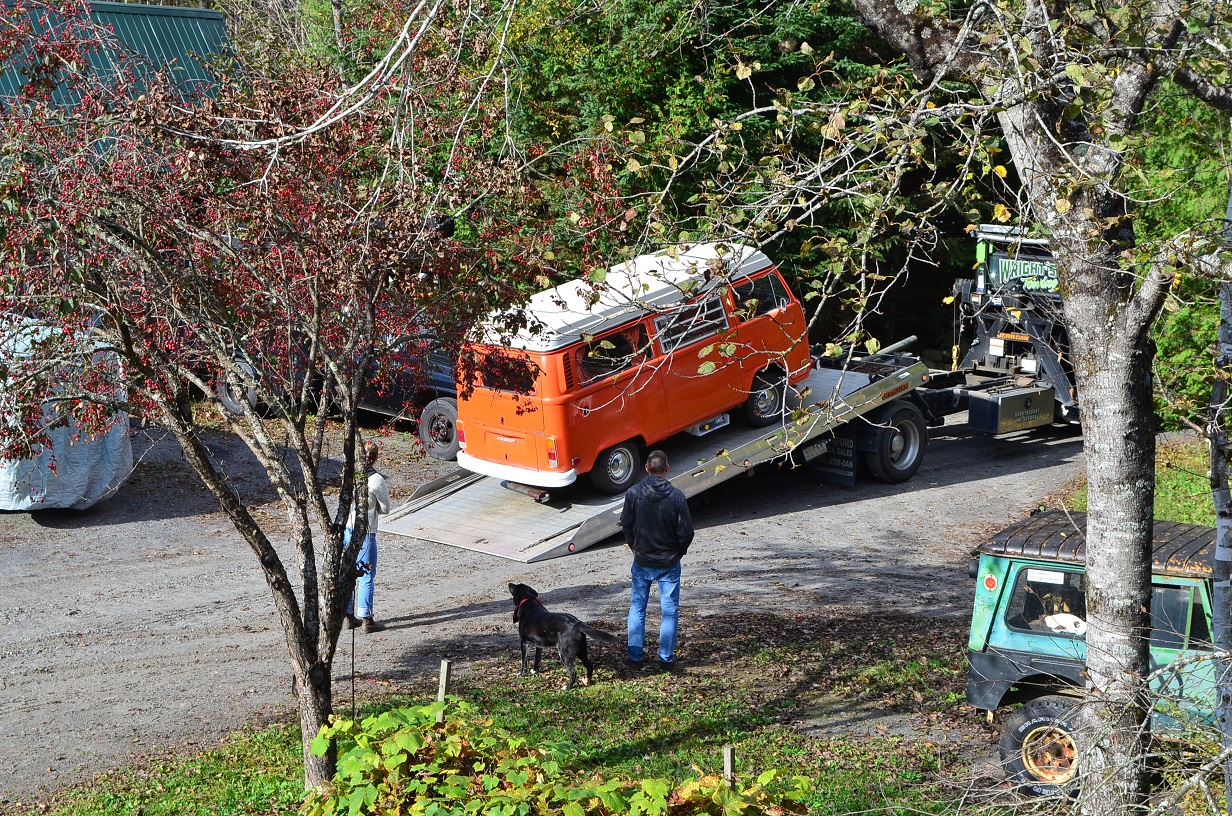This beautiful 1975 VW Camper in Tiffany Blue came in with some unresolved mystery issues described as a "Major engine problem". The facility that brought it over believed it had something to do with the 1970's fuel injection system.
Which would make sense since the vehicle was jump started with the cables hooked up backwards by mistake.
As I was assessing the vehicles issue I was able to get the engine to idle and warm up beautifully with some adjustments but when you open the throttle approaching 2000 rpm a disturbing sound developed.
A rhythmic rattle noise, sort of like pinging, a very troubling noise.
This pinging, turns out, was coming from the intake plenum not the cylinder heads which I suspected at first. This told me, as well as other indications, that this seems more like a problem with the engine not the fuel injection system.
I could hear two perfectly timed cylinders were having a problem and the exhaust felt strange. What is causing it? Two fuel injectors? A lean condition? Intake backfire? That would be strange.
No OBD port to hook up to here kids! As I combed through the VW vans fuel injection system and after hours of making sure the F.I. wiring harness was all good, that the ECU, air flow meter, sensors, ect were all seeing each other and even swapping out the ECU with a test unit and adjusting the fuel calibration, I confirmed that the injection system is working fine.
No problem there.
I pondered, double checked, dug deeper and confirmed my results. I still found nothing. Hmmmm... What is going on here?
While on a drive through the mountains of Vermont, in my 1969 Ford F-100, I went through the whole Otto cycle (4 stroke cycle) in slow motion in my mind. I was imagining the fluid dynamics and processing what is happening to the gas exchange within the engine. Why do two adjacent cylinders have an issue and the other two do not? What is the common denominator? I pondered what would happen if the exhaust valve was barely opening. I theorized that if the exhaust valves of two adjacent cylinders are not opening much at all there could be something wrong with the cam lobe for these two cylinders, being that they share the same exhaust lobe, that is the common denominator!
If that lobe is prematurely wore down then the valves wouldn’t be opening much at all. If the exhaust valve was opening a little bit it would be sufficient for an engine at low idle because there is not much gas exchange going on.
However, open the throttle and the gas exchange increases and you'd quickly overwhelm the effected exhaust valves. If that were to happen then the exhaust gas pressure could not bleed off and would be sent out of the intake valve on the intake stroke, needing somewhere to go, this hot gas could cause the fresh charge in the intake plenum to ignite. That could be the terrible sound coming from inside the intake plenum.
This would also mean that the exhaust lobe is eating itself to death and there is probably more damage in the engine because of debris floating around in there.
I bet if I pulled the valve covers off and remotely cranked the engine over I am going to see the rocker arms for cylinder 2 and 4 barely moving.
Thus this is what I did and what I found and confirms my theory. Cylinders 2 and 4 exhaust rockers are barely moving due to premature wear of the camshaft exhaust lobe.
Now What?
What caused the exhaust cam lobe to wear down prematurely?
How is the customer going to respond to this not so happy news?
Story to be continued…




